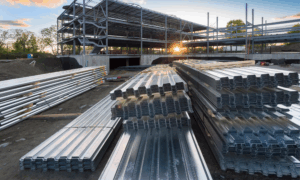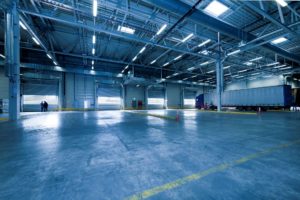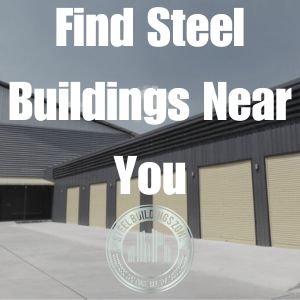
Top Features to Include in Your Commercial Steel Office Building
If there’s one thing I’ve learned in my 15 years building metal structures for businesses across Oklahoma, it’s this: a commercial steel office building can be one of the smartest, most flexible investments your company makes—but only if it’s designed with the right features from the start.
As the owner of a metal building supply and construction company, I’ve helped everyone from law firms and tech startups to manufacturers and school districts create steel office spaces that are efficient, comfortable, and ready to grow with them. Steel gives you a solid foundation, but it’s the features you build into it that make it high-performing.
Here’s what I always recommend including in a commercial steel office building if you want long-term value, operational efficiency, and the kind of environment people want to work in.
Clear-Span Interior Design
One of the biggest advantages of steel construction is the ability to design wide-open, column-free interior spaces. These clear-span layouts give you incredible freedom to configure your office however you like—whether you want an open floor plan, segmented offices, conference rooms, or all of the above.
I’ve had clients start with a wide-open design for a collaborative team and later reconfigure it with glass-walled offices as their leadership team grew. Steel makes that possible without having to tear into structural components.
High-Performance Insulation and HVAC
A comfortable office starts with good insulation. I always recommend insulated metal panels or spray foam insulation depending on your budget and building use. Good insulation reduces heating and cooling costs—especially here in Oklahoma, where we deal with both extremes.
Pair that with a properly sized HVAC system and smart thermostats, and you’ll not only keep employees happy, you’ll see the difference on your energy bills.
Plenty of Natural Light
Too many people still associate steel buildings with dark, industrial interiors. That couldn’t be further from what’s possible. If you want a bright, inviting space, natural light should be a key part of your design.
Skylights, clerestory windows, or translucent wall panels can flood your space with daylight. Large energy-efficient windows can also enhance both aesthetics and productivity—employees tend to feel more alert and energized in naturally lit spaces.

Efficient and Durable Interior Finishes
When I work with clients, I always emphasize the value of low-maintenance, commercial-grade finishes. You want materials that hold up to daily wear and tear but still look clean and professional.
For floors, polished concrete, commercial vinyl plank, or sealed epoxy are all solid choices. For walls, go with finished drywall or modular metal panels that can be cleaned easily. And don’t overlook ceilings—drop ceilings can give you access to wiring and ductwork while maintaining a polished look.
Smart Office Infrastructure
Modern office buildings need to support an array of technology. That means pre-planning for cabling, Wi-Fi coverage, and ample electrical access. One mistake I often see is trying to “figure it out later.” That leads to exposed cords, last-minute changes, and extra costs.
From the beginning, make sure your building has:
-
Data wiring pathways
-
Mounted hardware locations (routers, security cameras)
-
Plenty of outlets and USB charging points
Also, consider smart building features, like automated lighting, access control systems, and remote HVAC management. These technologies aren’t just about convenience—they improve security and reduce waste.
Sustainable and Energy-Efficient Options
Sustainability isn’t just a buzzword—it’s an important factor in long-term cost savings and public perception. Steel buildings are inherently eco-friendly because steel is recyclable, but you can take it further.
I often recommend:
-
Solar-ready roofs for future panel installation
-
Rainwater collection systems for landscaping use
-
Low-flow plumbing fixtures
-
ENERGY STAR-rated windows and appliances
Even modest upgrades here can qualify your project for green building incentives or tax credits.

Aesthetic and Branding Flexibility
One of the myths I hear all the time is, “A steel building can’t look professional.” That couldn’t be more wrong. With the right exterior and interior finishes, a steel office can be just as visually impressive as a traditional structure.
You can add stone, brick, stucco, or wood cladding to the exterior—or go for a clean, modern metal finish. Inside, your finishes, lighting, and layout should reflect your company’s brand. I’ve helped clients install custom entryways, reception desks, wall murals, and color schemes that tie directly to their identity.
Built-In Expansion Potential
Here’s something I always talk about with business owners: plan for your future today. One of the best things about steel buildings is how easy they are to expand. You can add more square footage later without interrupting day-to-day operations or having to tear down part of your structure.
If you think your team might grow—or if you may need a warehouse, storage wing, or manufacturing space down the line—design the building with expansion in mind. That might mean leaving a wall blank for a future addition or installing oversized doors or utilities you’ll need later.
Secure, Functional Entrances and Parking
It’s not just about what’s inside the building. Your entrances, sidewalks, and parking areas matter too. I recommend designing for multiple entry points—especially a main public entrance and a secure employee entrance.
Add an overhang or canopy to provide weather protection, install motion-sensing lighting for safety, and make sure your parking area is well marked and ADA compliant. I also encourage clients to include a designated delivery/loading zone if they expect regular shipments.

Final Thoughts
Designing a commercial steel office building isn’t just about choosing materials—it’s about creating a space that supports how your team works and how your business grows. By including these features, you’ll build something that’s not only durable, but smart, adaptable, and energy-efficient.
Steel gives you the structure. It’s up to you to build in the features that make it a true asset to your business.
Written by Jason Caldwell, a Texas Tech University graduate with a bachelor’s degree in Construction Engineering. As the owner of a successful metal building supply and construction company in Oklahoma for 15 years and a writer and editor for Steel Building Zone, I specialize in helping businesses design and build durable, high-performing metal structures for commercial and industrial use.

Leave a Reply